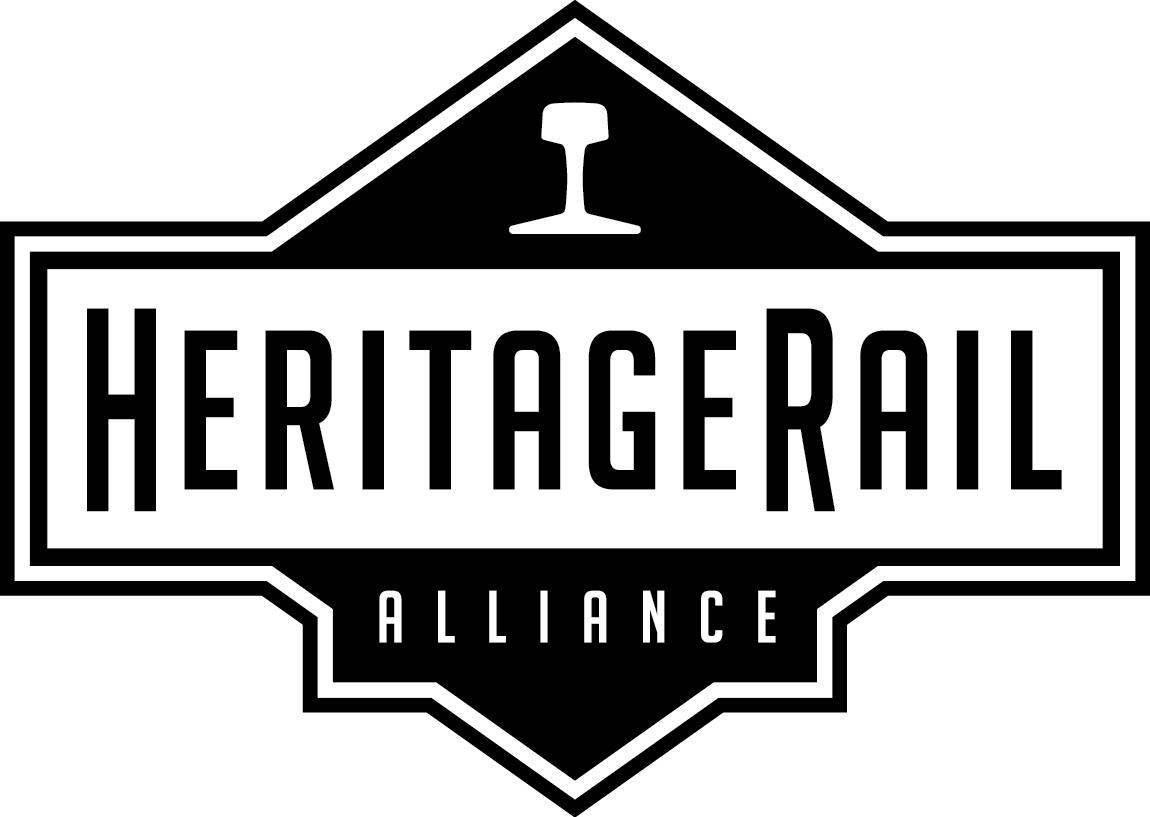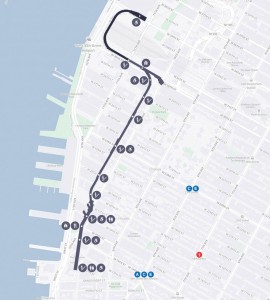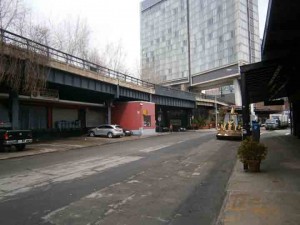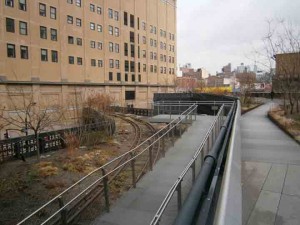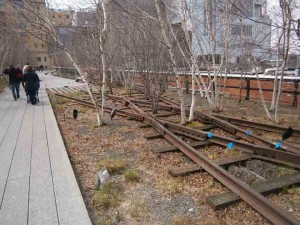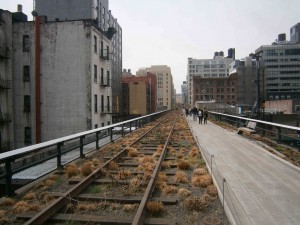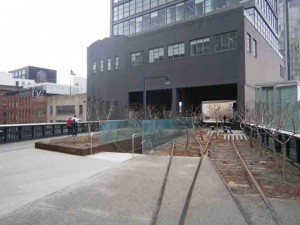
By Aaron Isaacs
Those of us who run most of the continent’s museums and tourist railroads are used to rail preservation being done in a particular way. This usually happens with minimal dollars and a group of dedicated volunteers. Our goal usually involves getting some trains to run and carry passengers. Or if we can’t run trains, at least we can cosmetically restore and display vintage rolling stock, or refurbish a depot, tower or other surviving building. We tend to forget that there are other approaches which can have equal validity. One of those has taken full flower in New York’s High Line, which I was able to visit last year.
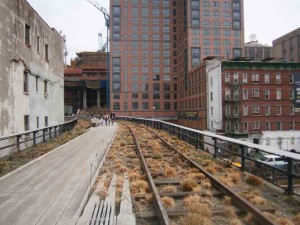
Much of the High Line looks like this, with one track replaced by a walkway and the other left in place.
For decades this elevated freight railroad on New York City’s west side sat vacant, rusting and pushing up weeds. It seemed a sure candidate for demolition, which was delayed only because it was so expensive. Eventually the neighborhood began to evolve from industrial to residential and someone had the bright idea of converting the High Line to a linear, elevated urban park. In true New York fashion, big money got behind the project and hired professional designers to transform the space.
The designers set out to accomplish four goals:
1. Make the High Line accessible and enjoyable for pedestrians, including the disabled.
2. Create public art.
3. Install extensive landscaping.
4. Honor the structure’s railroad history, and the history of the industries it served.
The finished product has proven to be a spectacular success on all counts. With last year’s opening of the last section, overlooking the Long Island Rail Road’s storage yard, the High Line measures 2 miles from end to end. For most of that distance at least one track is still in place, along with switches, diamond crossings and even some spur tracks into adjacent buildings. The knowledgable railfan may notice that the ties seemed rather widely spaced and the joint bars look odd. That’s because they were removed and relaid. The first priority was to strip the structure down to the deck and make the necessary structural repairs, then put the track back. The reinstallation isn’t technically accurate, but that’s a quibble.
The careful replanting of weeds (pardon me–annuals) makes it look as abandoned as when they found it. Here’s what it says about landscaping on the Friends of the High Line’s website. “The High Line’s planting design is inspired by the self-seeded landscape that grew on the out-of-use elevated rail tracks during the 25 years after trains stopped running. The species of perennials, grasses, shrubs and trees were chosen for their hardiness, sustainability, and textural and color variation, with a focus on native species. Many of the species that originally grew on the High Line’s rail bed are incorporated into the park’s landscape.” It used to look like this.
Stairs and elevators have been added at several points to improve access. There are connections to adjacent buildings and it actually goes through one building.
The result? Last year the High Line saw 4.8 million visitors. I was there on a sunny Spring day and it was mobbed with walkers, including a number of groups. Here are some photos of my visit.
